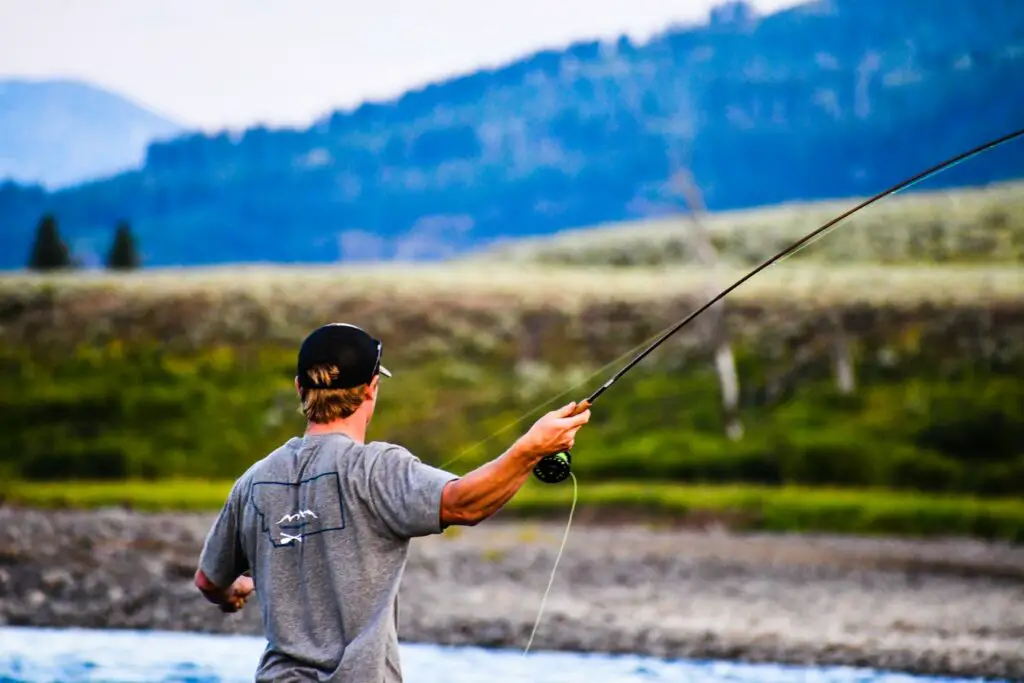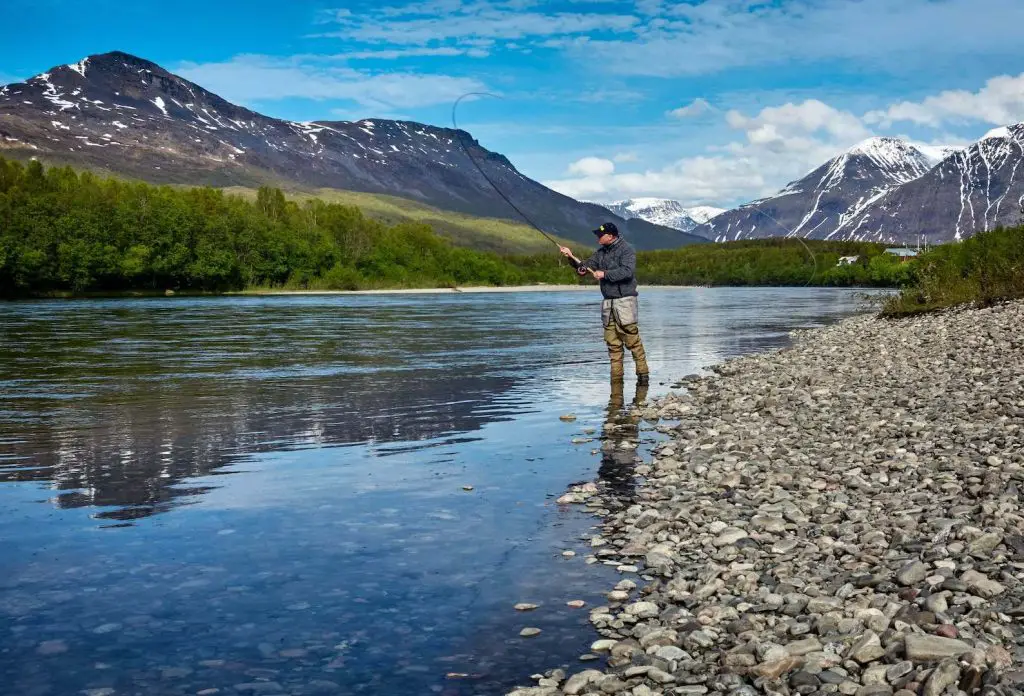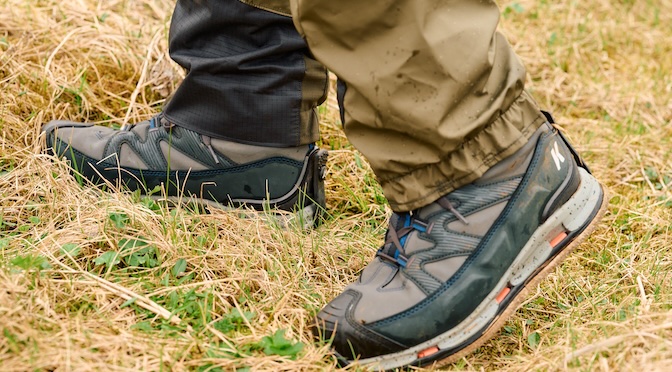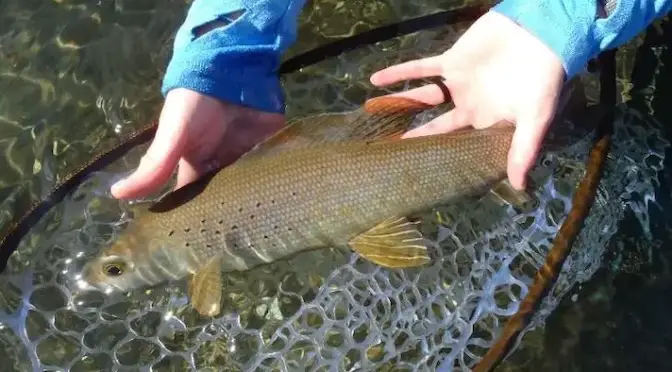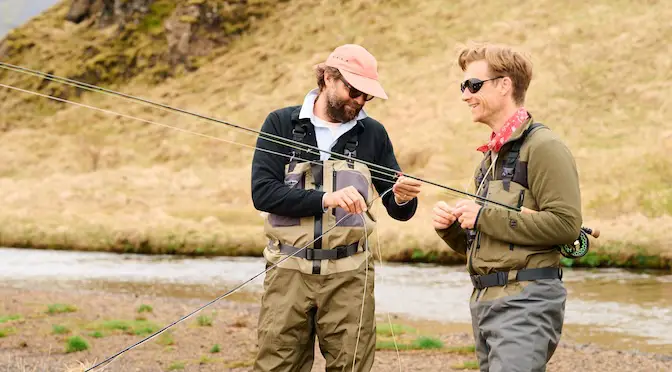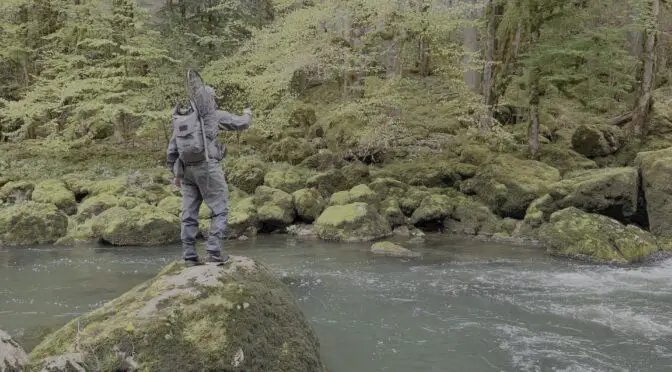- On the Water with the Korkers Bantam Lite - June 26, 2025
- How to Find Trout in Rivers & Streams Anywhere - June 13, 2025
- Educating the Next Generation of Salmon Anglers - June 4, 2025
Welcome to the fascinating world of fly fishing – an art form that balances patience, skill, and deep connection with nature.
Fly fishing is known for its grace and elegance, all of which come into play in mastering the art of casting a fly rod. This comprehensive guide will help you understand how to cast a fly rod and the mechanics of fly casting, detail its variations, and provide tips to improve your technique, regardless of your current skill level.
The Basic Mechanics of Fly Casting
Fly casting can be likened to a dance, requiring a sense of rhythm and timing, where precision and grace often trump brute strength. But what exactly is happening when a fly fisher sends that delicate fly line whistling through the air?
Fly casting is unique in that unlike other forms of fishing, it’s the weight of the line that carries the hook. In essence, you’re casting the line, not the lure. This understanding is crucial to mastering the art of fly casting.
The basic fly cast involves two main parts: the back cast and the forward cast. During the back cast, the fly line is pulled back and sent behind you. This is then followed by the forward cast, which propels the line forward towards the desired target.
A key principle in fly casting is ‘loading the rod.’ This refers to the way the weight of the line flexes or bends the rod during the cast, storing energy that is then released during the forward cast.
Feeling the ‘Load’
Understanding the concept of ‘loading the rod’ is one thing, but actually feeling it in action is another. It’s a sensation you’ll come to know well as you become more experienced in fly casting.
A properly loaded rod feels a bit like a stretched spring, eager to release its stored energy. It’s this energy that, when released at the right moment in the forward cast, sends the line out towards your target.
The Power Stroke
Casting a fly rod is a matter of timing, precision, and understanding the rhythm between your movements and the rod’s response. The key moment in any cast is the power stroke – the point of release where the energy stored in the rod is utilized to propel the line forward.
Getting this power stroke just right can take some practice. If released too early or too late, your cast can lose power, distance, and accuracy. However, once mastered, it is this timing that separates a functional cast from an artful one.
Involvement of the Non-Casting Hand
While the casting hand tends to get most of the glory in fly casting, don’t overlook the role of your non-casting hand. It has two main functions: managing the loose line and applying tension during the cast. In two-handed casting, the non-casting hand becomes even more important, sharing the load of casting larger, heavier rods and managing more complex casting techniques.
The Art of the Pause
A vital yet often overlooked aspect of casting is the pause. This brief moment allows the line to fully extend and straighten out during the backcast before you start the forward cast. It might seem counterintuitive to stop or pause when your aim is to keep the line moving, but this moment of patience is crucial to a successful cast.
A Deep Dive into Advanced Techniques
As you become more comfortable with the basic cast, you can start to explore more advanced techniques. One of these is ‘false casting’, where you keep the line airborne by alternating between backcasts and forward casts without letting the line settle on the water. This technique is useful for gauging distance, changing direction, or drying a wet fly.
Another advanced technique is the ‘double haul’, which involves a coordinated pull-and-release motion with your non-casting hand to increase line speed, making it possible to achieve longer casts and fight against the wind.
Single Hand Rod vs. Double-Handed Rod Casting
When you become more versed in fly casting, you might find yourself facing a choice between single-hand rods and double-handed rods, also known as Spey rods. Each has its advantages and situations where they excel, but they require different casting techniques. Understanding these differences can help you choose the right tool for your fishing environment and goals.
Single Hand Rod Casting
Single hand rod casting is the most common technique for many fly fishers. The core principles we’ve discussed thus far, such as loading the rod and mastering the power stroke, primarily revolve around single hand rod casting. This style offers great versatility and control, making it ideal for a wide range of situations, from small streams to moderately-sized rivers.
A key advantage of single hand casting is its adaptability in tight quarters. With proper technique, you can perform accurate casts in areas with limited backcast space. This is particularly helpful in heavily wooded areas or smaller bodies of water where vegetation or obstacles may limit your casting space.
Double-Handed Rod Casting (Spey Casting)
Double-handed rods, most commonly associated with Spey casting, are a different beast altogether. Named after the River Spey in Scotland where it originated, Spey casting is designed to handle situations where backcast room is severely limited or nonexistent, such as on large rivers or in coastal saltwater environments.
Spey casting uses different casting strokes and techniques. It requires both hands on the rod, hence the name, and typically involves longer rods (up to 15 feet or more). With a double-handed rod, you can cast farther and handle heavier lines and flies. This is particularly useful when fishing for larger species or when conditions require long casts with big, heavy flies.
However, Spey casting comes with a steeper learning curve compared to single-handed casting. Techniques like the Roll Cast, Single Spey, Double Spey, and Snap T are commonly used and each has its unique steps and timing. Patience and dedicated practice are critical to mastering Spey casting.
Which Should You Choose?
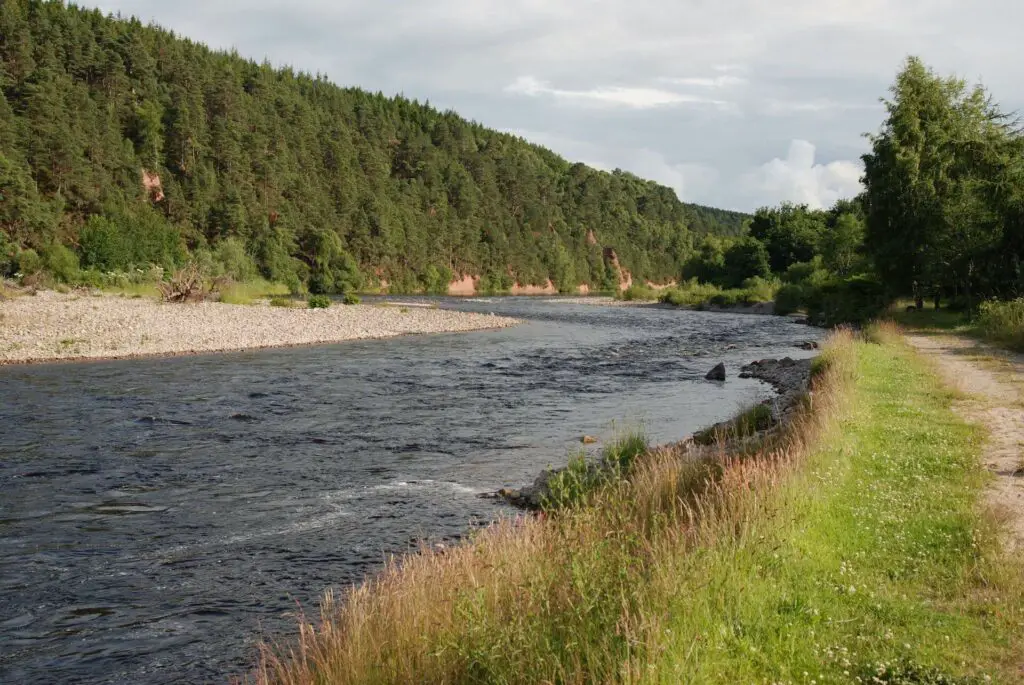
The choice between single hand rod casting and double-handed (Spey) casting depends largely on your fishing environment, the species you’re targeting, and personal preference.
If you’re primarily fishing smaller to moderately-sized waters and prefer a versatile, responsive casting style, a single hand rod might serve you well. On the other hand, if you frequently fish in large rivers, need to make very long casts, or target large species, a double-handed Spey rod might be your tool of choice.
However, there’s no rule against learning and mastering both styles. Many accomplished fly fishers are adept with both single-hand and double-hand casting and can switch between them depending on the situation. As always, practice and experience will be your best guides.
The Importance of Practice

Like any skill, becoming proficient at fly casting requires practice. Regular casting practice, even off the water, can drastically improve your skill and accuracy. Setting targets at different distances can also be a beneficial exercise, helping you to improve your aim and the consistency of your casts.
Conclusion
Fly casting is an art that requires finesse, understanding, and practice. It might feel overwhelming at first, but remember, even the most accomplished fly fishers started where you are. With time, practice, and a keen understanding of the principles laid out in this guide, you’ll find your rhythm and finesse, turning your casts into a graceful dance with nature. Happy casting!
This guide touches the surface of the deep pool that is fly casting. Remember, the best way to learn is to get out there and practice. So grab your gear, find a comfortable spot, and get casting!
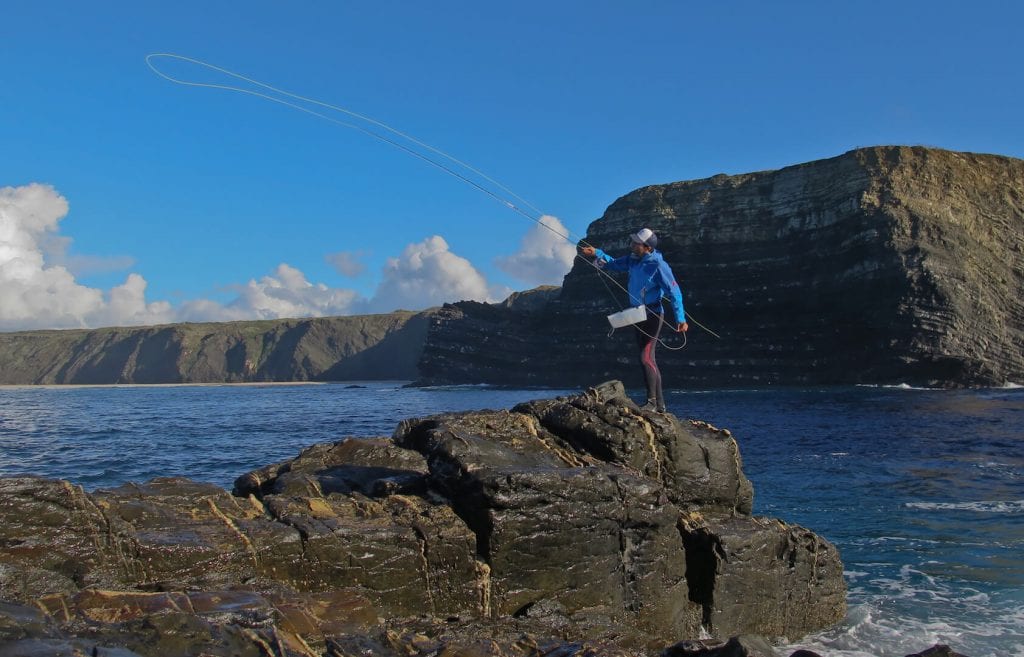
Frequently Asked Questions: How to Cast a Fly Rod
What’s the difference between fly casting and other types of casting?
Fly casting is unique because the line’s weight, not the lure’s, carries the hook. Therefore, you’re casting the line, not the lure, unlike other forms of casting.
What does it mean to ‘load the rod’?
‘Loading the rod’ refers to the bending of the rod under the weight of the line during the back cast. This stored energy is then released during the forward cast, propelling the line towards the target.
How do I improve my casting distance?
Mastering the double haul technique can significantly increase your casting distance. Also, improving your timing and the efficiency of your power stroke can add distance to your casts.
Can you recommend any exercises to improve my casting?
Practicing casting in a field or even your backyard is beneficial. Consider laying out targets at varying distances and work on your accuracy and consistency.
Can I use the same techniques for single-handed and double-handed casting?
While the principles of loading the rod and timing the power stroke apply to both, the actual techniques used in single-handed and double-handed (Spey) casting are quite different. Spey casting requires learning new casting strokes like the Roll Cast, Single Spey, and Double Spey.
Is double-handed casting better for distance?
Double-handed casting can indeed achieve greater distances, thanks to the longer rod length and ability to handle heavier lines and flies. However, accurate distance casting also requires good technique and practice.
Can I use a double-handed rod in small streams or rivers?
While you could technically use a double-handed rod in smaller waters, they are best suited for larger rivers and open coastal areas where their length and casting range can be fully utilized.
Should I start with a single hand rod or a double-hand rod?
For beginners, starting with a single hand rod is often recommended. It provides a solid foundation in the basic principles of fly casting, and the skills you learn can be later applied to double-handed casting if you choose to explore it.


